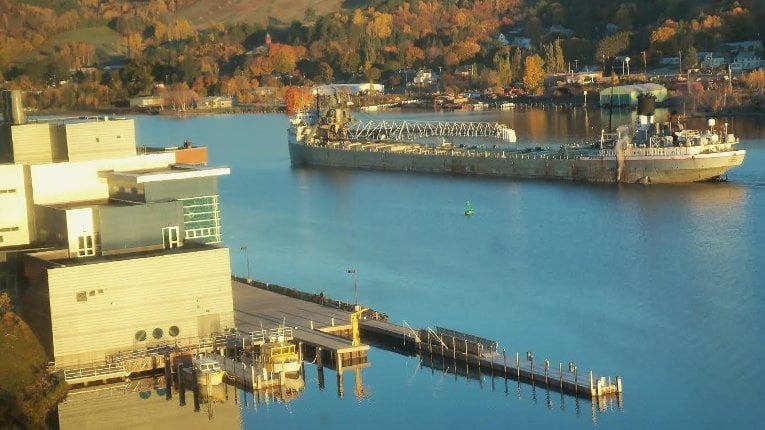The Great Lakes Research Center (GLRC) provides state-of-the-art laboratories to support research on a broad array of topics. Faculty members from many departments across Michigan Technological University's campus collaborate on interdisciplinary research, ranging from air–water interactions to biogeochemistry to food web relationships.
One of the GLRC's most important functions is to educate the scientists, engineers, technologists, policymakers, and stakeholders of tomorrow about the Great Lakes basin. The Center for Science and Environmental Outreach provides K–12 student, teacher, and community education/outreach programs, taking advantage of the Center's many teaching labs.
The GLRC also contains a lake-level marine facility and convenient deep-water docking, providing a year-round home for Michigan Tech's surface and sub-surface fleet of marine vehicles, including:
Surface Fleet
- Outland Remotely Operated Vehicles (ROVs)
- VideoRay ROV
- IVER 3 Fully Autonomous Underwater Vehicle (AUV)
Great Lakes, Great Design
The Great Lakes Research Center's architecture is reflective of the mission of Michigan Tech research programs, is respectful of the campus setting, and provides a distinct and personal image for the Center. Material choices support our goal of minimizing long-term maintenance costs, reducing energy consumption for the facility, and minimizing building material use.
The building (which had a price tag of $25.3 million) has forms, materials, and technology integration that enable us to tell the story of water. The Lake Superior environment helped inspire the building's materials, which include red case stone (providing a distinct rock-face texture), aquatint glazing used in windows and curtain wall systems, and metal panels in shades of buff, oxidized copper, and gray.
Green Solutions . . . and Green Roofs
The Center's green roofs serve much more than simply an aesthetic purpose. A low-lying carpet of plants live on many second-floor roofs, which soak up runoff and act as natural temperature regulators—helping to keep the building cool in the summer months.
LEED Energy Rating
The Center was built to LEED Silver standards, which encompasses design considerations in areas including:
- site sustainability,
- water efficiency,
- energy and atmosphere,
- materials and resources,
- indoor environmental quality,
- innovation in design, and
- region-specific environmental issues.
